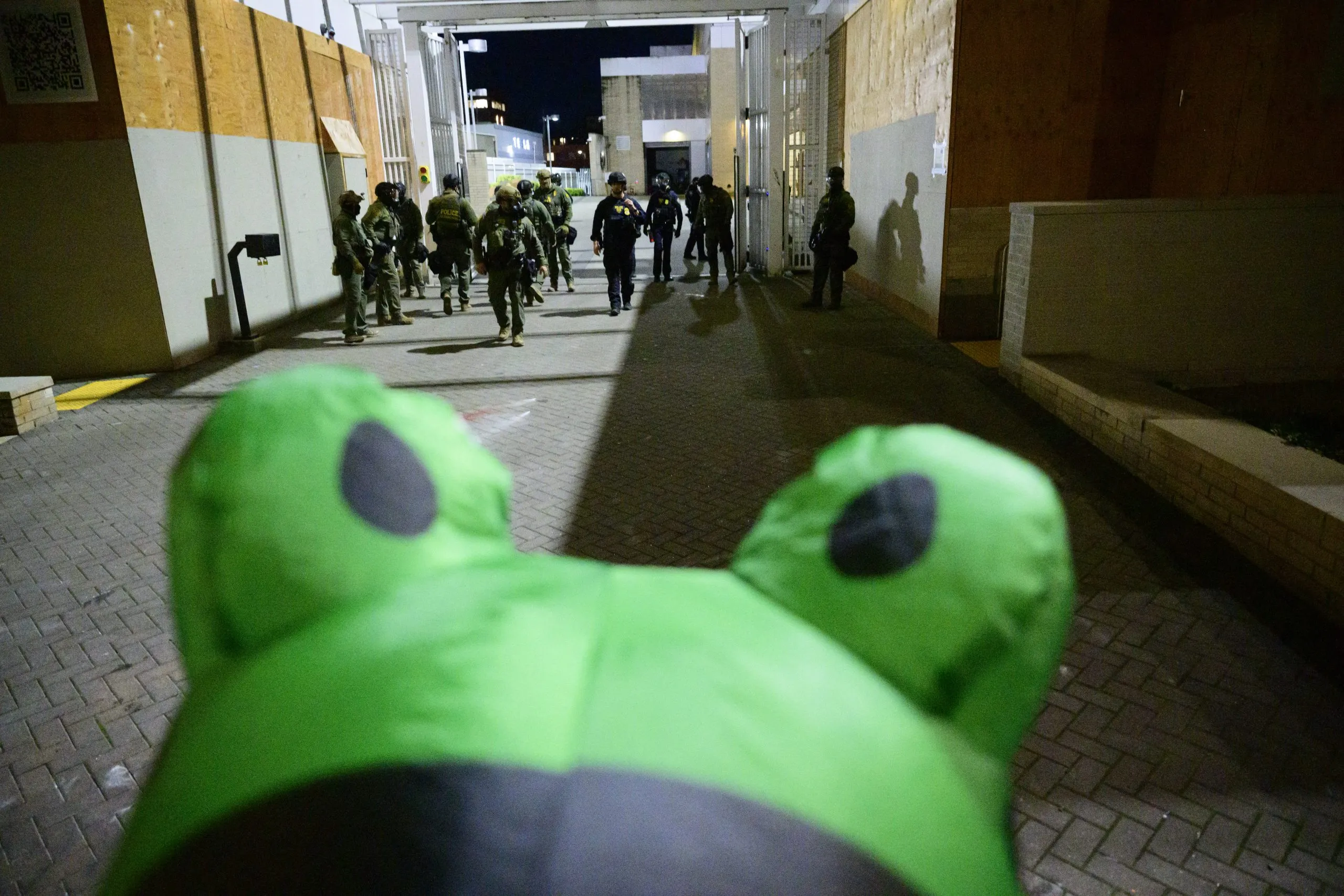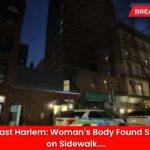A Tense Sunday on the South Waterfront
On Sunday, Sept. 28, hundreds gathered outside Portland’s ICE processing facility on the South Waterfront. The crowd reflected a broad slice of the city—mutual-aid volunteers handing out water and food, health-care workers ready with first aid, families and neighbors keeping watch. Hanging over it all was a question: what would President Donald Trump’s latest pronouncement mean on the ground?
A day earlier, Trump posted that he was “directing Secretary of War, Pete Hegseth, to provide all necessary Troops” to protect “war ravaged Portland” and ICE facilities “under siege,” adding he was authorizing “Full Force, if necessary.” By Sept. 28, 200 National Guard troops had been shifted into federal Title 10 service—though whether they would actually deploy in the city remained unclear.
‘War Ravaged’? Portlanders Push Back
Residents bristled at the rhetoric. For months, a small, largely nonviolent, ongoing demonstration has taken place outside the ICE facility, far from the “war zone” painted by partisan media and national figures. Sept. 28 marked the 113th day of protests at this location. Portland has seen encampments like this before; in 2018, an Occupy ICE action surrounded the same site.
Also Read
The coalition behind the current encampment—including Stop ICE PDX—has pressed city leaders to sever Portland’s contract with ICE. Some immigrant-rights groups initially hesitated, citing Oregon’s strong sanctuary protections and the risk that closing the facility could send arrestees to harsher detention elsewhere. But as federal officers repeatedly used aggressive arrests and crowd-control tactics, momentum grew to end ICE operations in the city. Protesters also point out the processing center is not supposed to hold detainees for more than 12 hours—yet people are frequently kept for days, in numbers they say exceed limits.
Building Community Defense and Rapid Response
“We believe people power… is going to really be able to push back the government,” said Holly Brown of Portland Contra Las Deportaciones, which is launching a rapid response network to mobilize community observers when ICE attempts arrests. Similar models—community patrols, alert systems, and mutual-aid infrastructure—have been used by groups like the Coalition for Community Self-Defense, the LA Tenants Union, and Grupo Auto Defensa.
What Witnesses Saw on Sept. 28
As the afternoon swelled, demonstrators waved Mexican and Palestinian flags, held signs reading “GTFO” to ICE and “Obeying Trump makes you a war criminal,” and packed the street outside the gates. Multiple witnesses say federal officers and state police in military-style gear pushed into the crowd at intervals, deploying chemical agents at close range and making forceful arrests.
“There was tension in the air,” recalled Tyler Fellini of Portland Jobs With Justice, who joined in civil disobedience with allied labor activists. When officers pushed forward, Fellini says they sprayed labor organizers; running to help, Fellini was sprayed as well and sought medical care.
Independent journalist Alissa Azar, who has documented the encampment for months, described a familiar pattern: officers emerge to clear the driveway for vehicles that may carry detainees, confront nonviolent protesters, then fire pepper balls and tear gas and conduct “brutal arrests.” “I don’t think I’ve seen a single arrest or detainment there that didn’t have at least four feds on one person,” Azar said.
From the ground on Sept. 28, many observers concluded the violence was one-sided—and it came from law enforcement.
Fears of Escalation With Troops on Standby
Activists warn that any military deployment—by personnel not trained for civil policing—could further inflame tensions and frame residents as enemy combatants. Yet organizers insist they won’t be intimidated. “I’m here not only to stand against ICE,” said Omar Gil of Portland Contra Las Deportaciones, “but against this incursion from the federal government on our city… We’re much more united than we are divided.”
City and State Push Back
As Title 10 orders moved forward, Oregon Governor Tina Kotek phoned Trump to counter his depiction of Portland and argue against sending troops. Attorney General Dan Rayfield sued, calling the plan an unconstitutional attempt to coerce Oregon into the president’s priorities. The state and city then filed for a temporary restraining order, warning of “irreparable harm.” U.S. Sen. Jeff Merkley urged Trump to “stay away,” arguing federal intervention would spark the very unrest he claimed to quell.
Complicating matters, a federal government shutdown began Oct. 1—muddying funding questions for a deployment priced at $3.8 million. Internally, Brig. Gen. Alan R. Gronewald acknowledged troops’ “mixed emotions,” reminding them their mission would be to protect federal facilities and personnel and to follow lawful orders.
Courts, Recusals, and an Injunction
The Trump administration successfully sought the recusal of U.S. District Judge Michael Simon, citing his marriage to Rep. Suzanne Bonamici, a critic of the deployment. After a two-hour Oct. 3 hearing, the court delayed a decision. Protests surged in anticipation.
On Oct. 5, U.S. District Judge Karin Immergut issued an injunction blocking the troops from deploying in Portland. The Ninth Circuit agreed to hear arguments about the order’s scope and allowed the Guard to remain under federal control—waiting at Camp Rilea on the north coast—while litigation proceeds.
The Narrative War Escalates
Even with troops on standby, Trump continued to portray Portland as a battlefield, comparing it to “World War II” and vowing to end “the Radical Left’s reign of terror.” The White House hosted an “Antifa Roundtable” pushing claims of nationwide “premeditated anarchy,” while DHS leadership visited Portland and accused state and local officials of “covering up” for antifa. Right-wing demonstrators rallied; clashes with anti-deportation activists followed.
For many Portlanders, this is a reprise of 2020, when a federal surge reignited waning protests and birthed nightly mass actions—moments like the “Wall of Moms” standing between officers and youthful demonstrators.
What Comes Next
With a national “No Kings” day of protest planned for Oct. 18, activists say any troop presence risks expanding demonstrations beyond the ICE facility to other federal sites citywide. Labor leaders and organizers argue Portland’s history of strikes and solidarity equips the city to resist authoritarian overreach. “Trump is the ultimate bad boss,” said Fellini, “and Portland’s labor movement knows how to fight bad bosses.”
For now, the injunction holds, the Guard waits on the coast, and protesters return to the ICE gates—insistent that the only consistent violence they’ve faced comes from the officers arrayed against them, and determined to keep showing up for their city, their rights, and their neighbors.












